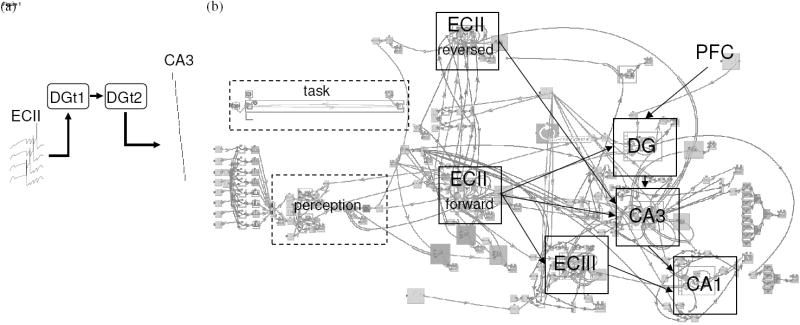Figure 1.
(a) Associations encoded and retrieved in the model. An episodic cue formed by buffered input in ECII is associated with a temporal context specific representation in DG, which is in turn associated with successive temporal context specific representations. A representation in DG is associated with a sequence memory in CA3 that is a reversed representation of an entorhinal episode of spikes received during encoding. (b) The Catacomb integrate-and-fire neuron model of temporal context dependent episodic memory. Input spikes enter forward buffer (64 pyrmidal neurons with ADP) and reverse buffer (64 pyramidal neurons with ADP) models of entorhinal cortex layer II (ECII). Buffer output enables encoding in recurrent network models of entorhinal cortex layer III (ECIII, 16 pyramidal neurons) and of hippocampal region CA3 (32 head-direction sensitive pyramidal place cells). During encoding, unique spike patterns in dentate gyrus (DG, 16 excitatory neurons) are associated with the ECII output and with episodic encoding activity in CA3. During retrieval, spikes in hippocampal region CA1 (16 pyramidal neurons) are elicited by input from ECIII that is gated by the episodic activity retrieved in CA3, due to input from DG.

